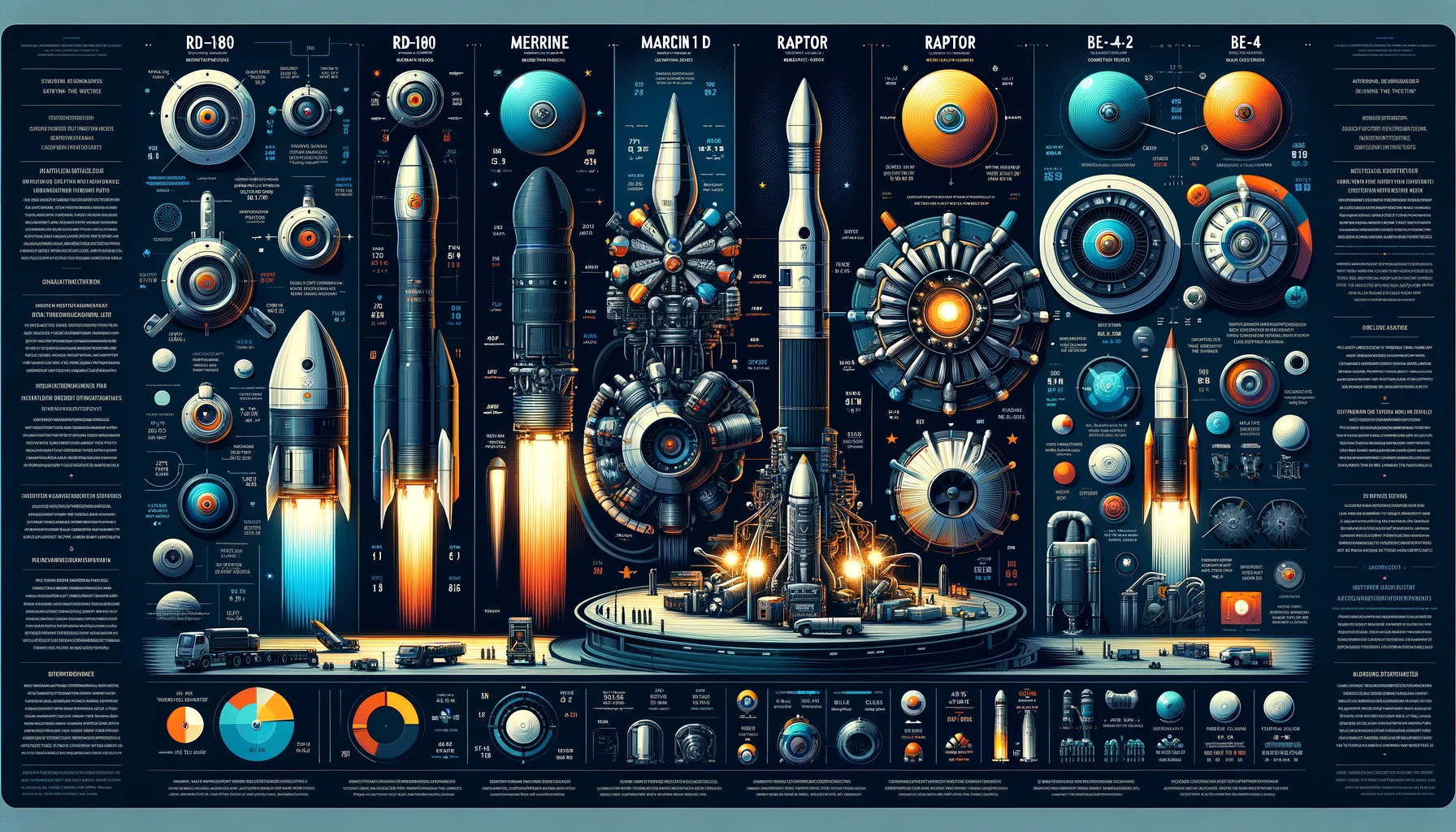Note – this post is part of a series of posts generated almost entirely using generative AI, including ChatGPT4, DALL·E 2, and other tools. It’s an experiment in understanding how AI tools work, while having a bit of fun. None of the information here is doublechecked for accuracy, and in many cases it’s complete nonsense.
Rocket Infographics1




Key characteristics for five of the most popular rocket engines in use today, including their engineering details:2
1. RD-180
- Type: Liquid rocket engine
- Country of Origin: Russia
- Used In: Atlas V rocket
- Fuel: RP-1 (a refined form of kerosene) and Liquid Oxygen (LOX)
- Thrust: RD-180 produces a thrust of up to 4,152 kN (933,000 lbf) at sea level.
- Specific Impulse: 311 seconds (sea level), 338 seconds (vacuum)
- Features: Dual combustion chamber, dual-nozzle design; uses a staged combustion cycle for high efficiency.
2. Merlin 1D
- Type: Liquid rocket engine
- Country of Origin: United States
- Used In: Falcon 9 and Falcon Heavy rockets by SpaceX
- Fuel: RP-1 and LOX
- Thrust: The Merlin 1D engine generates 845 kN (190,000 lbf) of thrust at sea level, which increases to 914 kN (205,500 lbf) in the vacuum of space.
- Specific Impulse: 282 seconds (sea level), 311 seconds (vacuum)
- Features: Designed for recoverability and reuse; utilizes a pintle injector and a gas-generator cycle.
3. Raptor
- Type: Liquid rocket engine
- Country of Origin: United States
- Used In: SpaceX’s Starship spacecraft and Super Heavy rocket
- Fuel: Liquid Methane (CH4) and Liquid Oxygen (LOX)
- Thrust: Each Raptor engine produces approximately 2,200 kN (500,000 lbf) of thrust.
- Specific Impulse: Estimated at 330 seconds (sea level), 356 seconds (vacuum)
- Features: Full-flow staged combustion cycle, offering greater efficiency and reusability; designed for missions to Mars.
4. BE-4
- Type: Liquid rocket engine
- Country of Origin: United States
- Used In: Vulcan Centaur rocket by United Launch Alliance and Blue Origin’s New Glenn
- Fuel: Liquid Methane and LOX
- Thrust: Produces 2,400 kN (550,000 lbf) of thrust.
- Specific Impulse: Estimated at 310 seconds (sea level), 340 seconds (vacuum)
- Features: Utilizes an oxygen-rich staged combustion cycle; designed for high reusability.
5. Vulcain 2
- Type: Liquid rocket engine
- Country of Origin: Europe
- Used In: Ariane 5 ECA
- Fuel: Liquid Hydrogen (LH2) and LOX
- Thrust: The Vulcain 2 engine delivers 1,390 kN (310,000 lbf) of thrust in the vacuum of space.
- Specific Impulse: 432 seconds (vacuum)
- Features: Gas-generator cycle; features a single combustion chamber and nozzle, designed for high reliability and efficiency in lifting heavy payloads to geostationary transfer orbit (GTO).
These engines represent the forefront of rocket propulsion technology, each with unique features and optimizations for their specific applications in space exploration and satellite deployment.
